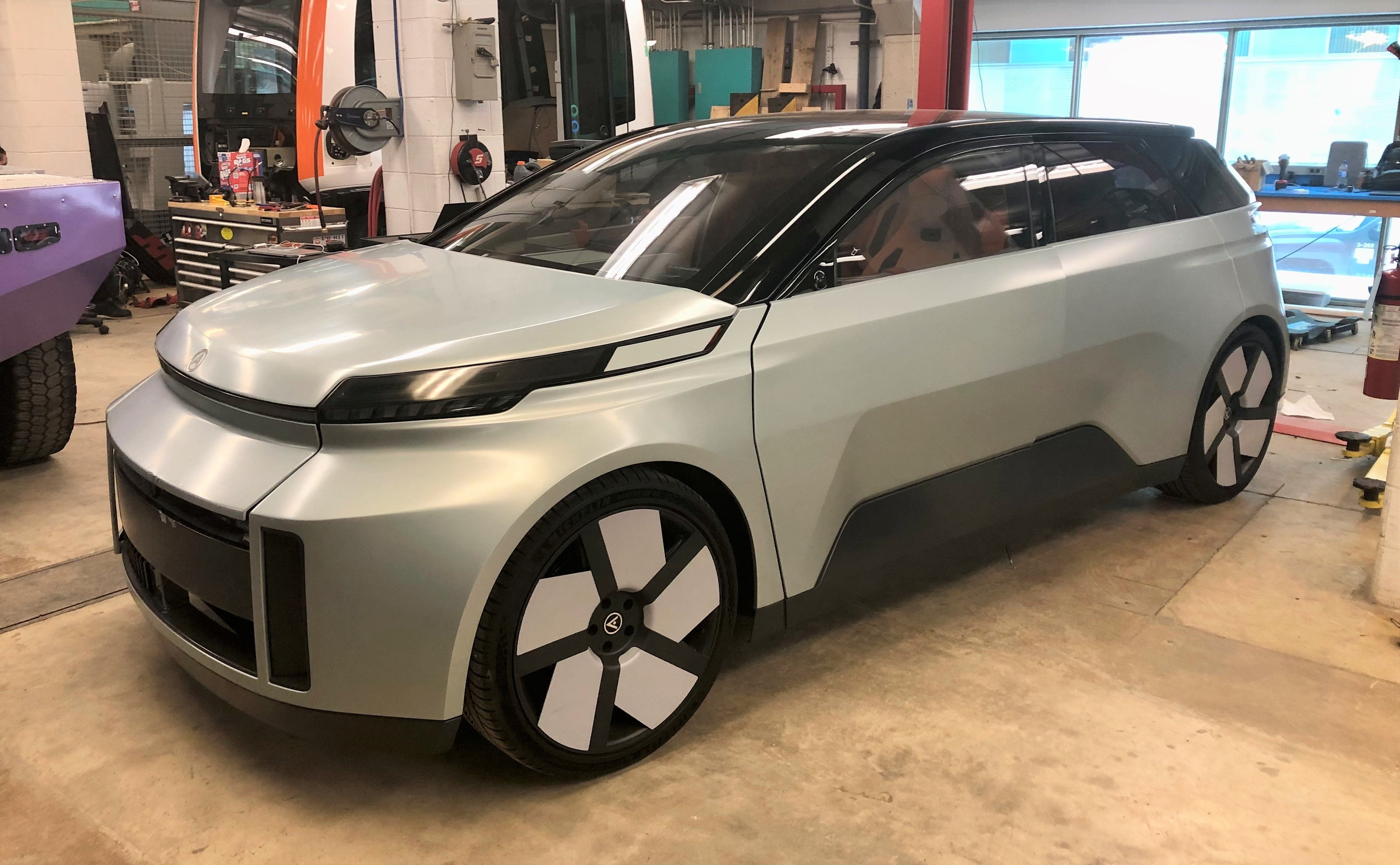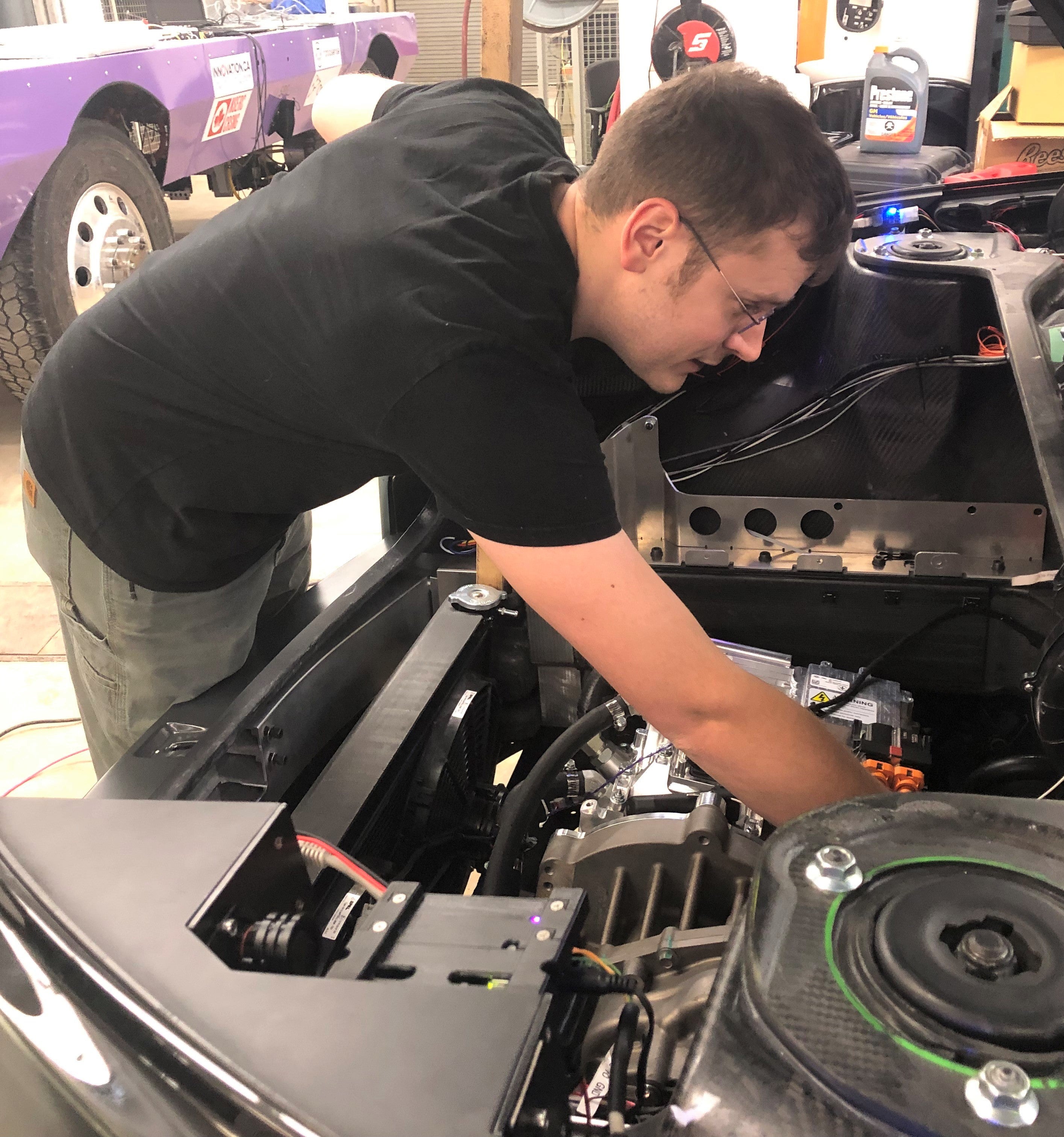An all-Canadian electric vehicle caused a sensation when it was unveiled at the Toronto International Auto Show last month. People raved about the Arrow's sleek, 3D-printed chassis, or gushed over its solar-panel roof and a steering wheel that can tell if a driver is in a medical emergency.
But what they couldn't see beneath those cutting-edge wonders was what makes the one-of-a-kind SUV go - something made possible by more than a year of work by engineers at the University of Waterloo.
That would be the Arrow's powertrain, an absolutely essential system designed and partly assembled at Waterloo's Mechatronic Vehicle Systems (MVS) Lab under the watchful eyes of mechanical engineering professor Dr. Amir Khajepour.

A front view of the one-of-a-kind Arrow concept car developed by a team that includes researchers and technicians at Waterloo Engineering.
"We were probably the only ones in Canada who could do this," he said as technicians carefully tested the Arrow in his Waterloo lab earlier this month.
A powertrain is a group of components that generate power and deliver it to the wheels. In the case of the Arrow, the powertrain, which sits out of sight below the vehicle's silver and black body, includes two 180-kilowatt electric motors, transmissions and differentials, and its massive battery pack.
It was the job of Khajepour and four MVS Lab colleagues to design and do all the analysis needed to meet vehicle requirements for performance, speed, range, gradeability and packaging.

Jeff Graansma, director of the MVS Lab, checks under the hood of the Arrow concept car.
"The UW team modeled the vehicle to evaluate its performance and control for a dual electric-motor drive system, and design and fabricate a battery pack for the available space in the Arrow vehicle," explained Khajepour. "The team also did all the software development and integration of the powertrain into the vehicle."
Waterloo engineers were part of an even bigger Project Arrow team.
In a world fighting climate change, the future of cars must be zero emissions. Although gasoline-burning cars and trucks accounted for 95 per cent of registered vehicles in this country in 2021, the Canadian government has declared that 20 per cent of new passenger vehicles sold in Canada in 2026 must be emissions-free. By 2035, the mandated figure rises to a daunting 100 per cent.
To help the nation make this transition, the Automotive Parts Manufacturers' Association launched Project Arrow, named in honour of Canada's famed 1950s Avro Arrow interceptor jet. Their goal was to create a zero-emissions SUV concept car that showcased Canadian know-how and electric-vehicle technology to the global automotive industry.
Four students at Carleton University designed the vehicle. More than 50 Canadian suppliers collaborated on various parts and the Ontario Tech University in Oshawa provided the lead hands in assembling it all. The federal, Ontario and Quebec governments provided funding.
Powertrain challenge assigned to Waterloo
But before everything could be put together, devising a suitable powertrain remained a missing piece of the Arrow puzzle. Assigning that task to Waterloo engineers made perfect sense.
"We had the parts, the tools and the experience building prototype electric vehicles to make all this work," said Jeff Graansma, the MVS Lab director at Waterloo.
And when it came to choosing an automotive-grade control module to manage the batteries and all aspects of the vehicle's operation, the job went to Audesse, an MVS Lab startup company.
"The greatest challenge we had was working with flexibility as the vehicle was developed," Graansma said, explaining that as the SUV was under production, others were "resizing and moving things around," while "the configuration of the battery kept changing."
That was no small thing. Because the entire car sits on the "wheels-to-wheels, door-to-door" battery, the slightest changes in the Arrow's dimensions demanded subsequent changes in the powertrain.
'It gets everybody talking'
The hope now is that once the car is certified to hit the road, automakers will realize what can be done by Canadian researchers and parts manufacturers and call on that expertise and innovation as they invest in coming generations of electric vehicles.
"It gets everybody talking to each other," Graansma said. "And it gets companies talking to each other who may have never talked before."
Khajepour fully agrees.
"It is a great feeling to be part of this," he said.
Top photo: Amir Soltani (l-r), Mike Duthie, Amir Khajepour and Jeff Graansma in their Waterloo Engineering lab with the Arrow concept car.






